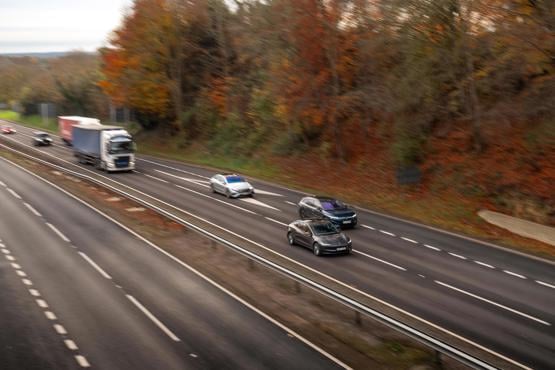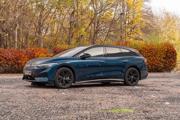We’re forever being told that the average driver only does about 20 miles a day and that having an electric car plugged in at home overnight is as seamless and easy as using an electric toothbrush.
And there are plenty of drivers for who that arrangement works flawlessly. Once you factor in that most electric cars can comfortably manage 200 miles on a single charge, it all looks very good on paper.
Of course, in reality, there are people that drive quite a lot more than 20 miles a day. In a modern car it’s quite easy to cover ten times that distance in just a couple of hours. If your destination doesn’t have any charging points – or ones that are quick enough – then you have to factor in time to use a public charger. At rush hour this isn’t always straightforward, plus it means spending less time at home with your family and more time accruing reward points at one of the well-known coffee shop chains.
So, car makers responded by giving us cars that can go even further. We proved it’s possible to surpass the 300-mile mark in our long-term BMW i4 a couple of years ago and now there’s a handful of models that’ll exceed 400 miles.
But can they actually do it? We know from experience that a 200-mile range means about 150 in reality. And a promised 300 miles is closer to 230.
To find out we assembled a trio of 400+-mile EVs and drove them as far as we could.
Our veritable ‘mixed bag’ of test cars begins with the Tesla Model 3 Long Range. It’s the most capable Tesla model available, promising 436 miles of driving for a reasonable £44,990.
Next up, the Volkswagen ID7 Tourer Pro S. This is currently the longest-range estate car available, with an official range of 424 miles. It costs £56,170.
Finally, the biggest and most expensive car in our test: the Mercedes EQS 450+. This £112,506 luxury saloon claims an impressive 480 miles from a full charge.
To test our three long-range EVs we came up with the glamorous idea of driving them from our office in Peterborough to Wetherby Services, then turning around and coming back. The route is only 237 miles, which is less than half the Merc’s claimed range. Once we returned to the office we then took the cars on an urban loop until they reached a claimed zero miles.
Of course, to make the test a little more tricky we decided to do it on a day when the ambient temperature was barely above freezing.

The cars were left charging overnight and we set of nice and early. The rules were quite simple: climate control set to 21-degrees and ‘Auto’, no full throttle action, stick to the speed limits and don’t hold anyone up by trying to hypermile.
Immediate problem: electric cars really don’t like the cold. The 480-mile Mercedes was predicting a range of only 270 miles at 100% charge. While that’s enough to complete our test route, it’s not really a promising sight.
As the three cars consumed electricity at an alarming rate while trying to heat their batteries and their cabins, but after about half an hour we noticed the efficiency figures started to creep up.

For a couple of hours, the three cars sat quite happily at 70mph. Perhaps unsurprisingly the Mercedes was the most competent at this. It’s eerily quiet on board and there’s a suppleness to the suspension that feels like you’re floating along the road. Praise must also be given to its adaptive cruise control and lane keeping system, which did the majority of the actual driving. It’s not only a simple system to use but it reacts to traffic ahead in a more natural way with softer application of the brakes and throttle.
In the Tesla there was frustration. Its Autopilot system can only be configured when the car is stationary, so once you’re on the move there’s no way to switch between straightforward cruise control or the full assistance system, which includes steering and lane changing. With the latter enabled the car forces you to use its self-steering and if you try and override it the entire cruise control system disengages. It also reacts more snappily than we’d like. So, we ended up driving it ‘manually’.
Volkswagen has hit the blend just right with the ID7. It rides beautifully and has a spacious and comfortable interior. The assistance systems are almost as good as those on the Mercedes and, again, it feels very at home on the motorway.
All three cars pack in giant infotainment screens. The Tesla incorporates everything into the display, even the instrument cluster functions. Mercedes fits the EQS with a Hyperscreen, providing three displays in total. The ID7 has a smaller and less impressive driver display, but the large central unit is easy to use.

The results
How did the cars fare then? Well, spoiler alert: none of them managed 400 miles. In fact, none of them even managed 300.
The EQS travelled the furthest, covering 298 miles before its range readout hit zero. Its battery has a useable capacity of 118kWh, so that’s an achievement of 2.5mi/kWh.
Next up was the Model 3. It achieved 270 miles but proved far more efficient owing to it only having a 75kWh battery. That’s an achievement of 3.6mi/kWh.
The ID7 managed just 253 miles, which equates to 2.9mi/kWh from its 86kWh battery. Interestingly, it performed worse than the ID 7 Pro (77kWh battery) that we tested earlier this year. That one managed 262 miles and 3.4mi/kWh, although ambient temperatures were a little higher then.

Our test wasn’t particularly scientific, but it does show the real-world capability of three cars driven in the same conditions at the same time.
The Tesla delivered a stand-out performance, managing 3.6mi/kWh in challenging cold conditions. It's also the cheapest car in our test by the biggest margin. The Mercedes, however, is the range champion thanks to its massive battery. The ID7 is a nicer place to be than the Tesla, so those covering long distances regulalry might find it the more appealing option, despite its poorer efficiency.
If we wanted to do the full 400 miles then we’d have needed to stop and charge each car. To complete the challenge, the Tesla would have been the cheapest needing a 36kWh boost at a cost of around £30.
The EQS would have needed another 40kWh to complete the trip, costing about £34, while the ID7 would have required an extra 50kWh at a cost of around £42.
Photography: Alex Tapley


































Data - 02/01/2025 12:16
200 miles in a couple of hours? Eek, I'm clearly driving too slow as I normally only average about 50mph driving around the south of England!